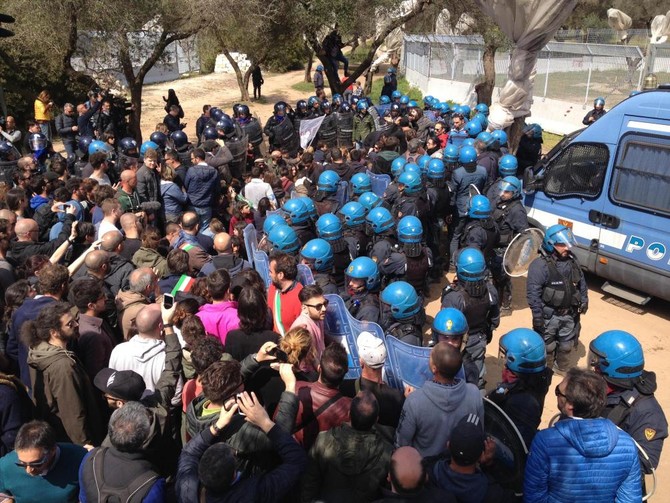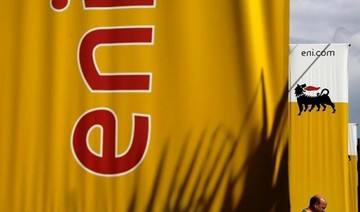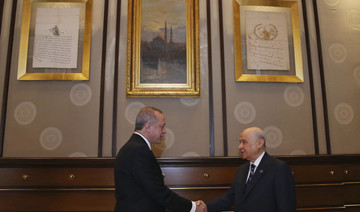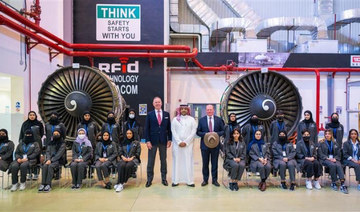It has been a decade in the making: The $40 billion Southern Gas Corridor (SGC), arguably the gas industry’s most significant and ambitious undertaking yet, involving seven governments and 11 companies.
The 3,500 kilometers pipeline corridor is one of the biggest infrastructure projects in the global oil and gas industry, bringing Caspian gas through three linked networks across Azerbaijan, Georgia, Turkey, Greece and the Adriatic Sea to southern Italy where it can be conveyed to European markets.
SGC has been pushed by the EU since 2008 as a strategic imperative to reduce the bloc’s dependence on Russian gas, and has been bankrolled by EU and international funding, including loans from the Asian Infrastructure and Investment Bank, which counts Saudi Arabia and UAE as members.
There are three legs of the project, the biggest of which is called TANAP (1,850km), short for the Trans-Anatolian Natural Gas Pipeline. TANAP, which runs through the entire width of Turkey, is controlled by Istanbul-controlled infrastructure group BOTAS (30 percent) stake, Azerbaijan’s state oil company SOCAR (58 percent) and BP (12 percent).
The other two linked pipelines that dovetail into SGC are the Trans-Adriatic Pipeline (TAP), which meets TANAP at the Greek border and runs through Albania to Italy, and the South Caucasus Pipeline that goes through Georgia from Azerbaijan.
When gas flows into TANAP for the first time this July (TAP will not be up and running till early 2020) the Turkish government will collect transit fees and other tariffs that will help to grease the wheels of the Istanbul exchequer and, perhaps, go some way to ameliorate the critical reviews of the country’s finances by global credit ratings agencies.
“The new pipeline is good for the Turkish economy because it diversifies Turkey’s sources of natural gas imports,” Kristin Lindow, senior vice president at Moody’s, told Arab News. “Also, SOCAR is constructing a new oil refinery that will be fueled by this gas, reducing the amount of refined products that will need to be imported, therefore cutting the cost of energy imports. Finally, it is a step toward fulfilling Turkey’s ambitions to be an energy hub in the region.”
Turkey needs some good news. In March, Moody’s downgraded Turkish sovereign debt from Ba1 to Ba2, two notches below investment grade amid mounting concern that the Turkish economy is overheating with inflation in double digits and the World Bank expressing worries about a possible debt time-bomb further down the line. Turkish corporate debt is now roughly 70 percent of GDP, according to estimates from the Washington-based institute of International Finance. During the past five years, the value of the Turkish lira has about halved in value against the dollar.
To be fair, Ankara has already benefited: Some 80 percent of the pipes for TANAP have been provided by Turkish manufacturers and the project has provided cash for Turkish contractors, as well as employment. Now Turkish stakeholder BOTAS stands to profit as the gas begins to flow from its maritime source — Shah Deniz-2 — a gas field off the Central Asian coastline located in waters belonging to Azerbaijan.That field is being developed by a consortium spearheaded by operator BP.
TANAP will allow Turkey to reduce its dependence on Russian gas imports (which currently account for 55 percent of Turkey’s gas consumption). Richard Taylor, oil and gas analyst at BMI Research in London, said that SGC is a net positive for Turkey as it diversifies its energy supplies and allows it to derive additional revenue by having a huge pipeline passing through the country. There would also be servicing and contracting opportunities.
In an interview with Arab News, Anna Mikulska of the Baker Institute’s Center for Energy Studies in the US, said: “When current long-term contracts with Russia expire, Turkey will be in a strong bargaining position as gas coming into its territory will be far bigger than its demand. So it will be better able to negotiate good deals, and that way they will accrue savings.”
But the amount of gas involved in SGC is relatively small— just 16 billion cubic meters (bcm) of natural gas — a fraction of the 194 bcm of Russian gas that went to European consumers in 2017 (IEA). Of the SGC’s 16 bcm, 6 bcm is earmarked (via myriad supply contacts still being hammered out) for the Turkish market, and 10 bcm for Europe. At one time, there were plans to pump up to 60bcm through the SGC, said the Oxford Institute for Energy Studies (OIES). But this assumption was based on gas also passing through SGC from Turkmenistan, Iran Iraq and even the eastern Mediterranean.
Geopolitical factors have kicked those options into the long grass. According to a TANAP statement, volumes could be increased to 31bcm but that would be contingent on further development of Azeri gas fields, which is years away. The absence of bigger volumes has dashed Istanbul’s hopes of becoming a trading and transit hub for gas, according to Jonathan Stern, senior fellow at OEIS.
Mikulska added that not only were SGC volumes lower than anticipated, but the Turkish market had not liberalized enough. In other words, there was not “enough private competition.”
She said: “National (Turkish) companies are hidebound by policies as well as prices and where there is geopolitical confusion for buyers, that impedes the functioning of a conventional hub (such as Rotterdam).”
The SGC can be scaleable, so it remains to be seen how things develop. In part, that will depend on investment in the sector and “whether they (the Turks) will allow foreign participation,” Mikulska said.
Oswald Clint, an energy analyst at Alliance Bernstein in London, told Arab News: “As you create a hub then you can start to create a pricing mechanism, so Turkey could (potentially, but not now) launch a futures exchange as has been done in Singapore, Rotterdam and the UK. Then there are financial services jobs, a financial services market where local Turkish companies can hedge their energy input costs, and that creates a bit of a financial industry around it, too.
“If there is sufficient volume, there would definitely be opportunities to re-export,” he said. Gas could be stored in the summer and re-sold to Europe at a premium during a harsh winter, for instance, he said.
Stern said: “The best case would have been to have gas coming from other countries, not just Azerbaijan, allowing Turkey to become a huge transit hub for gas from the whole of the Middle East and Central Asia.
“That would have meant a competitive market in Turkey with all sorts of gas competing for the Turkish market, and therefore competing for transit onwards to Europe. But that isn’t happening, at least not at this point,” Stern said.
Taylor added there was not the liquidity and sophistication for Istanbul to become a trading hub “as of yet.”
Max Hess, senior political risk analyst at Ake International, argued that a bigger risk could be EU dependence on Turkey as a hub for the SGC at a time when the country’s drift toward authoritarianism under President Erdogan has put a strain on Europe’s relationship with Istanbul.
Erdogan is anyway hedging his geopolitical bets by agreeing to a new Russian initiative, Turkish Stream, a natural gas pipeline currently under construction from Russia to Turkey, running across the Black Sea. Construction started in May 2017.
The Turkish premier is also hedging on energy security, investing in nuclear power and looking to hold tenders for at least five new domestic coal mines this year, including one with 136 million tons of reserves, according to a Reuters report on April 10.
Stern said that to call the SGC a corridor may be an exaggeration in terms of how much gas is going to pass through it to Europe, but it is “a welcome addition allowing southern European countries to diversify their supplies and reduce their overwhelming dependence on Russian gas.”
EU officials said that the SGC is as much about displacing coal-fired power generation in central and southeast Europe as offsetting Russian dominance.
But this is the first non-Russian gas pipeline to Europe since the Medgaz link from Algeria to Spain was completed in 2008 and is highly significant for that reason.
Nevertheless, Turkey was perhaps hoping for bigger dividends than it is getting, Stern said. The country was once viewed by the EU as a highly desirable transit route compared with taking gas via Russia.
“Now, there are voices in Brussels saying ‘do we really want to take any more gas through Turkey?’ That is why things have become much more uncertain about what role Turkey will play, he said.
“I used to be inundated by Turkish PhD students wanting to write theses about how Turkey would be a hub for European gas. “But I was always uncertain about that,” Stern said.






















